In the 1980s, Willy Falcon and Sal Magluta were the most invincible drug lords in South Florida — but their reign wouldn't last forever.
First-generation Cuban immigrants Willy Falcon and Sal Magluta may have started out as high school dropouts, but everything changed after they began selling drugs in the Miami area. They initially planned to just make a little extra money, but they ended up taking control of one of the city’s biggest drug-smuggling organizations as the “cocaine cowboys.”
Steadily building their empire in the late 1970s and 1980s, Falcon and Magluta became locally known as “Los Muchachos” or “The Boys.” Despite their many illegal activities, they were sometimes seen as heroes in their local community, as they were often willing to share their wealth.
As chronicled in the Netflix docuseries Cocaine Cowboys: The Kings of Miami, Willy Falcon and Sal Magluta reigned as two of the most powerful cocaine kingpins in South Florida for decades — until it all came crashing down. Here’s what happened to “The Boys” after the dust settled.
The Rise Of Miami’s Cocaine Cowboys
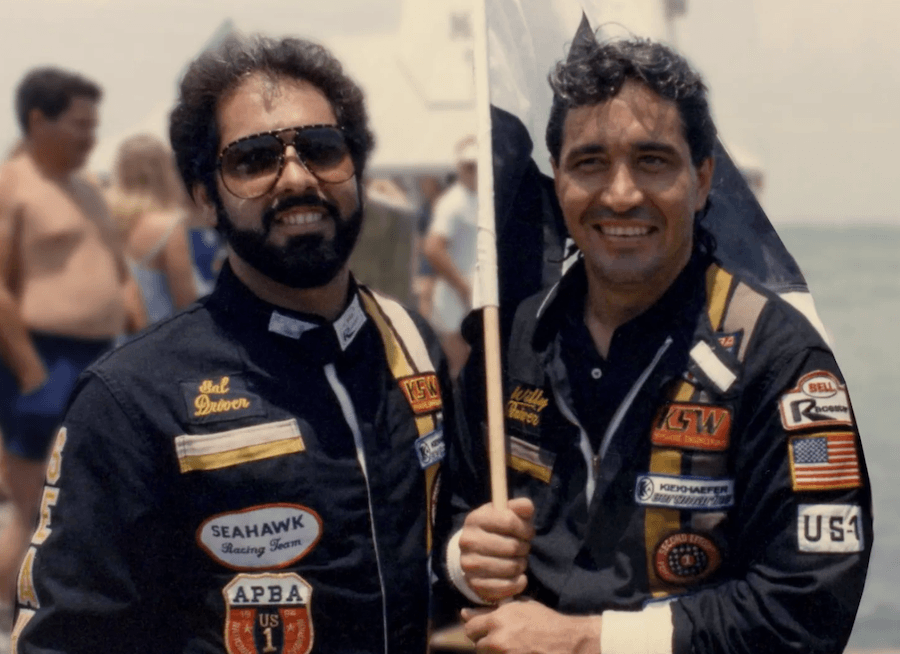
NetflixWilly Falcon and Sal Magluta, pictured during their powerboating days in the 1980s.
Though Willy Falcon and Sal Magluta were two of the most famous “cocaine cowboys” of late 20th-century Miami, they were far from the only ones. According to NBC Miami, the cocaine cowboys first came into the public consciousness thanks to a few other notorious drug traffickers.
On the afternoon of July 11, 1979, cocaine kingpin German Jimenez Panesso walked inside the Crown Liquors shop at Dadeland Mall in Miami. Accompanied by his bodyguard, Juan Carlos Hernandez, Panesso had initially planned to make a quick trip in and out of the store.
But then, two other men followed Panesso and Hernandez into the shop — armed with submachine guns. The gunmen quickly opened fire, leaving Panesso and Hernandez dead and two liquor store employees wounded in a hail of bullets. The killers then promptly escaped in a getaway car disguised as a delivery van, bearing the name “Happy Time Complete Party Supply.”
The police responded as quickly as they could, but all they could find was the abandoned “Happy Time” van at the far end of the mall’s parking lot. Inside the getaway car, they discovered an arsenal of weapons and bulletproof vests, leading authorities to call the van a “war wagon.”
Since many witnesses had described the chaotic scene as a Wild West-style shootout — and the individuals involved all appeared to have been drug traffickers — police dubbed the men the “cocaine cowboys.” It was one of the first of many shocking acts of violence that would see drug traffickers fight for control of the lucrative cocaine trade in South Florida.
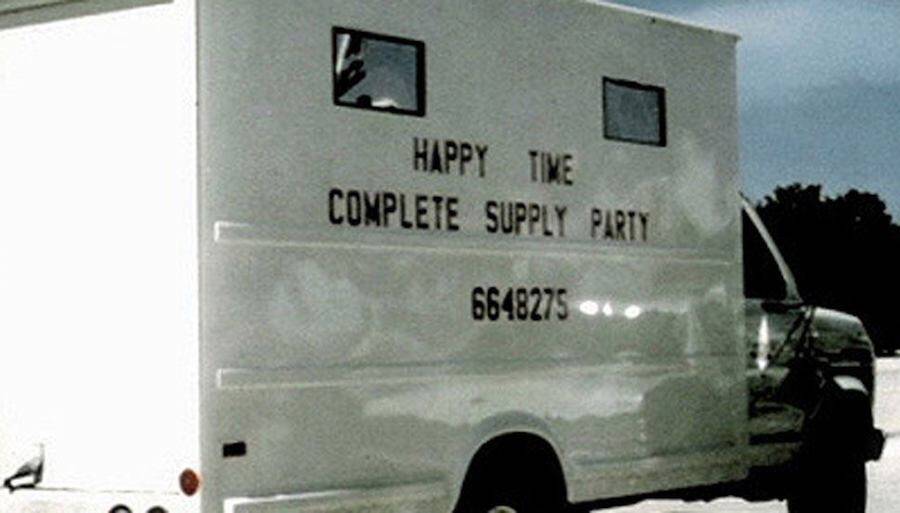
FacebookThe infamous “Happy Time” van, abandoned after the Dadeland Mall shootout in 1979.
Though some of these shootings involved members of opposing drug cartels and other organizations, others involved people who were supposed to be each other’s allies. The murder of Panesso and Hernandez was just one example. The hit had actually been ordered by Panesso’s boss at the Medellín Cartel, the notorious “queenpin” Griselda Blanco. So why did “La Madrina” — the Godmother — order the killing of her own drug baron?
According to the Sun Sentinel, the reason was quite simple: Blanco owed Panesso a lot of money, and she didn’t feel like paying him back.
Several Miami police officers have described this era as a time of chaos. Not only did drug traffickers have more powerful weapons than the cops, but authorities didn’t have access to modern-day technology that could help them track criminals down. It seemed impossible for them to curb the violence in their city, much less the booming cocaine trade connected to it.
It was perfect timing for two young Cuban Americans — who had dropped out of high school — to take advantage of this “Wild West” situation.
Salvador “Sal” Magluta had been born on November 5, 1954, and Augusto “Willy” Falcon had been born on September 1, 1955. Both Magluta and Falcon were originally from Cuba, but their families had moved to America while they were young so that they could start a new life in Miami.
As youths, Magluta and Falcon started their illicit careers by dealing marijuana at Miami Senior High School. They continued dealing after they dropped out. Though this was primarily a way for them to make money without having to go to class, they also began to dream of joining the powerboat racing circuit. Speedboats, to them, represented adrenaline and adventure. And before long, all their desires would be within their reach.
Cocaine Rings And Powerboat Kings
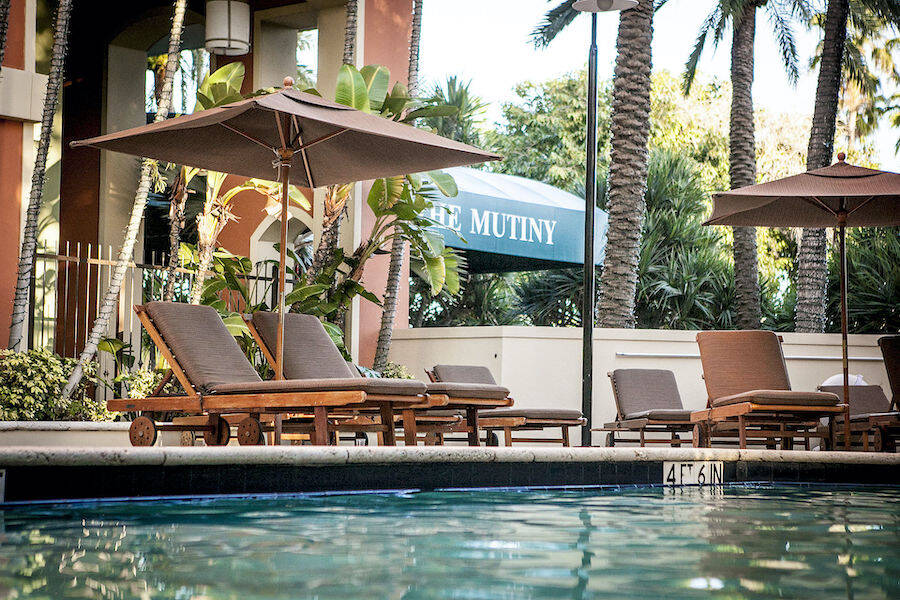
Wikimedia CommonsThe Mutiny Hotel in Miami has a far cleaner reputation today than it did in the 1980s.
According to the Los Angeles Times, Willy Falcon and Sal Magluta’s big break in the drug-trafficking industry came in 1978. Then, the future cocaine cowboys reconnected with an old friend named Jorge Valdés.
Valdés, like Falcon and Magluta, was a Cuban immigrant with humble roots. But unlike them, Valdés was an excellent student. Back in 1973, he had started college before turning 18 — and secured a position at Miami’s Federal Reserve Bank. But Valdés also supplemented his income by setting up dummy corporations in the Caribbean for Miami businessmen.
Eventually, Valdés crossed paths with an associate of a lawyer who represented drug dealers in Miami. Soon afterward, he began spending time at The Mutiny Hotel, a resort that was becoming popular amongst wealthy drug smugglers, criminal defense lawyers, and celebrities. It wasn’t uncommon to see illicit deals negotiated over expensive champagne.
As a young accountant, Valdés was in awe of The Mutiny Hotel and its colorful cast of characters. By 1977, some of the Mutiny guests had begun sizing him up as well, especially after they learned about his skills at setting up dummy corporations. One Colombian businessman approached Valdés with an opportunity to help him start a banana boat company — and then later admitted that he actually needed help moving cocaine.
According to the book Hotel Scarface, Valdés agreed to help the man, who worked for the Medellín Cartel, move “a load or two” so that he could help his parents buy a house. But soon, he was making upwards of $1 million per month — and he had reassessed his decision to stop at a load or two.
Flush with cocaine cash, Valdés brought several of his friends to The Mutiny Hotel. And at some point in 1978, he invited Willy Falcon and Sal Magluta there — to ask them for assistance in moving 30 kilos of cocaine.
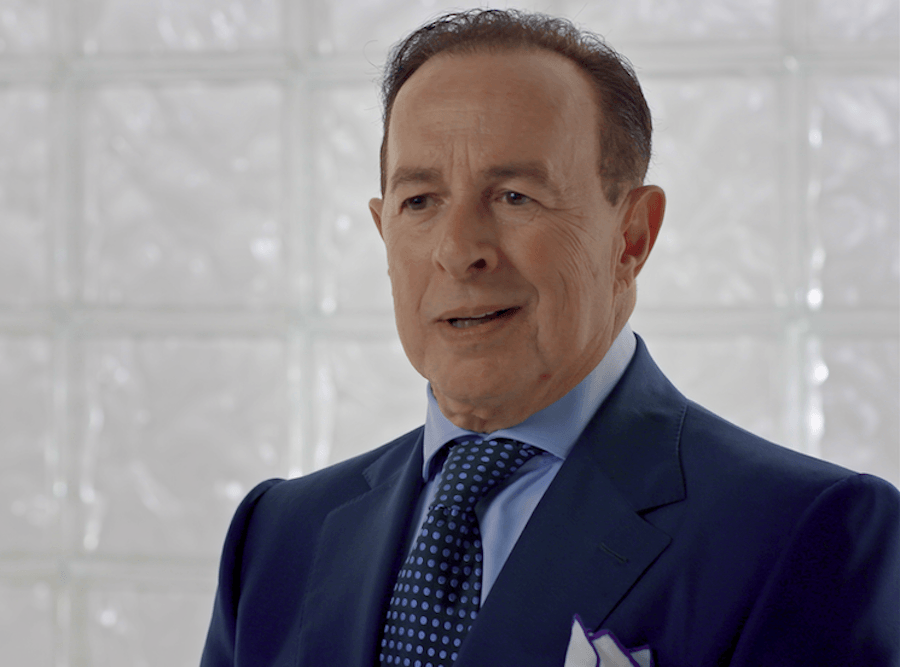
NetflixFormer drug lord Jorge Valdés eventually served 10 years on cocaine-related charges. After his release in 1995, he turned his life around by becoming a pastor and getting a Ph.D. in New Testament Early Christianity and Ethics.
Initially, Magluta hesitated. But Falcon did not. He answered, “We do it.” Valdés, who was about to leave on a vacation, trusted his friends to follow his orders. And by the time he returned to Miami, Valdés was pleased to see that they had $1.3 million in cocaine proceeds waiting for him. Even better, Magluta and Falcon were willing to move even more cocaine.
As Willy Falcon and Sal Magluta worked with bigger loads, they became resident fixtures at the Mutiny. And as Hotel Scarface puts it, they used their status there to establish a “cocaine conglomerate” of friends and associates — many of whom were involved with the local powerboat racing circuit.
Falcon and Magluta’s cocaine cash — plus their new connections at The Mutiny Hotel — allowed them to finally pursue their dream of powerboat racing in the 1980s. Just like drug dealing and making covert business partnerships, they turned out to be very talented on the racing circuit.
According to the Miami New Times, Falcon ended up winning an Offshore Challenge off the Florida Keys in 1986, and Magluta won three national championships. “Los Muchachos” felt like they had truly arrived.
Since both Falcon and Magluta appeared on ESPN telecasts, they often attracted attention from local fans — and the authorities. In Miami at the time, cocaine smugglers and powerboats seemed to go hand in hand.
But it was clear that Falcon and Magluta weren’t trying to hide.
How Willy Falcon And Sal Magluta Operated As Cocaine Cowboys

TwitterWilly Falcon and Sal Magluta were considered local celebrities in Miami for much of the 1980s.
Unlike other drug lords, Willy Falcon and Sal Magluta refused to keep a low profile and instead operated in plain sight. They also became known as local “Robin Hood” figures, since they often shared their wealth with people in the local immigrant community. Perhaps most significantly, Falcon and Magluta had also cultivated a non-violent reputation — at least for a while.
Though Falcon and Magluta were closely intertwined with the violent Medellín Cartel, they avoided the turf wars that plagued other cocaine cowboys in Miami. This may be due to the fact that they didn’t have much contact with Griselda Blanco. Instead, they seemed to work as middlemen for Pablo Escobar — and they were careful to stay on his good side.
Meanwhile, Falcon and Magluta ran their corporation as American distributors for a billion-dollar industry — and made themselves billionaires in the process. Their network of suppliers and other “employees” would often transport the drugs from Colombia to the Bahamas. There, Falcon and Magluta’s powerboats would pick them up to be discreetly moved to Miami.
In the interconnected yet autonomous world of international cocaine trafficking, Falcon and Magluta managed importation and distribution expertly. The cocaine cowboys were also consistent and reliable.
And the fact that Falcon and Magluta had connections to banks further ensured their success. According to the Miami New Times, Falcon had known Ray Corona, the man who eventually took control of the Sunshine State Bank, for years. So when Falcon dove headfirst into the drug-trafficking industry, he asked Corona if he could make secret cocaine-money deposits.
Corona agreed to Falcon’s offer by allowing him to deposit the cash discreetly at the Sunshine State Bank. Then, Corona devised a money-laundering scheme by giving the cocaine cowboys “loans,” which were then repaid to the bank with the cash in the safe deposit boxes. That way, Falcon and Magluta could use the “clean money” to invest in legitimate real estate.
While Corona was eventually indicted and later convicted of a money laundering scheme — which involved a different drug smuggler — Falcon and Magluta had plenty of other options to pick from in their growing network of associates. They often turned to offshore corporations in Panama, the Bahamas, and the Netherlands Antilles to launder their “dirty” money that would be difficult to explain to the authorities.
Considering how many allies they had and how long their business had lasted, it almost seemed like Falcon and Magluta were going to get away with everything. But the law eventually caught up with them.
How The Cocaine Cowboys Finally Got Caught
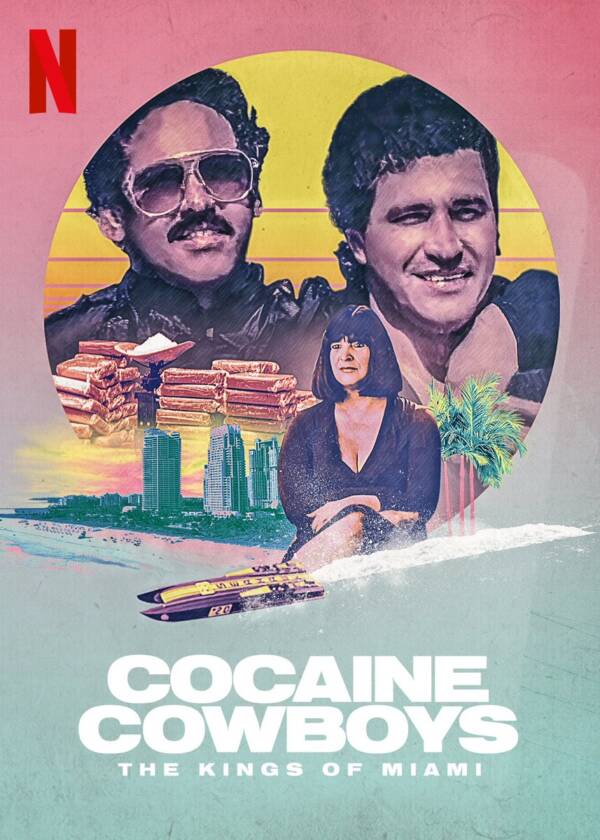
NetflixWilly Falcon and Sal Magluta’s story was chronicled in the Netflix docuseries Cocaine Cowboys: The Kings of Miami.
Willy Falcon and Sal Magluta amazed their fellow drug traffickers in their ability to evade prison. “They were like gods in the doper community,” said Sean Convoy, a supervisor for the U.S. Marshals Service, to the Miami New Times. “All the other smugglers talked about how invincible they were.”
Though Falcon and Magluta did have a number of encounters with the law in the 1980s, they always seemed to leave prison just as soon as they arrived — thanks to their use of false IDs and alias documentation as well as incompetence and corruption at the correctional centers that they entered.
But in October 1991, the pair were finally indicted on 17 drug trafficking charges accusing them of importing more than 75 tons of cocaine into the United States, according to the Sun Sentinel. Captured by federal agents, they stood accused of amassing over $2.1 billion in cash and assets.
By that point, many of Falcon and Magluta’s associates had already been convicted. Some of them had become witnesses in order to reduce or even avoid time in prison. Indeed, some who knew the cocaine cowboys were eventually called to testify against them in a trial that seemed to drag on.
Shockingly, three witnesses who were supposed to testify against Falcon and Magluta ended up murdered in the leadup to the trial. Though it was never proven that the cocaine cowboys ordered the hits, the suspicious timing led many to believe that they had changed their non-violent philosophy.
In 1996, Falcon and Magluta were acquitted, according to Esquire. It was a ruling that shocked many people, especially considering the massive amounts of evidence against them. But Falcon and Magluta were not home free. It later emerged that they had bribed some of the jurors to declare them not guilty. That, and the murders that were still fresh in the community’s mind, led prosecutors to build new cases against them.
Where Are Willy Falcon And Sal Magluta Now?

Public DomainA wanted poster of Sal Magluta from 1997, when he briefly escaped the authorities.
After the surprise 1996 acquittal, prosecutors rushed to charge Falcon and Magluta with smaller violations as they figured out how to build another case against them for the bigger crimes — including the murders of the witnesses. Falcon was promptly convicted of a firearms violation, while Magluta was charged with passport fraud. But since Magluta was free to briefly leave the building during his trial, he used that opportunity to take off.
Magluta’s escape happened in February 1997, and he was found just a couple of months later that April, according to United Press International. Though authorities initially thought he had escaped somewhere overseas, he was actually found just a half-hour north of Miami — wearing a cheap wig.
By 1999, the jury misconduct in the 1996 trial had finally been exposed. And in 2002, Falcon and Magluta were put on trial again for a variety of charges, including conspiracy to obstruct justice by paying off jurors, corruption, orchestrating the murders of three people, and money laundering.
In the end, Magluta was acquitted of the three murders, but he was convicted of other charges like money laundering and bribery. He was sentenced to 205 years in prison, later reduced to 195, according to Oxygen. He’s currently held at the ADX Florence in Colorado, America’s highest-security prison that’s been described as a “clean version of hell.”
As for Falcon, he chose to take a plea deal on the money laundering charges in 2003. He was sentenced to 20 years in prison but only served 14. Released in 2017, he was deported from the United States, as he had been a permanent resident and not a citizen. Though the initial plan was to deport him back to his homeland of Cuba, Falcon argued that he feared for his life in the country because he had donated to anti-Castro organizations.
Ultimately, Falcon was sent to the Dominican Republic, where it was thought that he would be safe. However, many Dominicans were upset to see him in their country, and so he left the nation shortly after he arrived.
It’s unclear where he went, and his exact whereabouts remain unknown.
After reading about the cocaine cowboys, take a look at the ruthless history of the Medellín Cartel. Then, go inside the crack cocaine epidemic of the 1980s and 1990s with these 33 harrowing photos.





